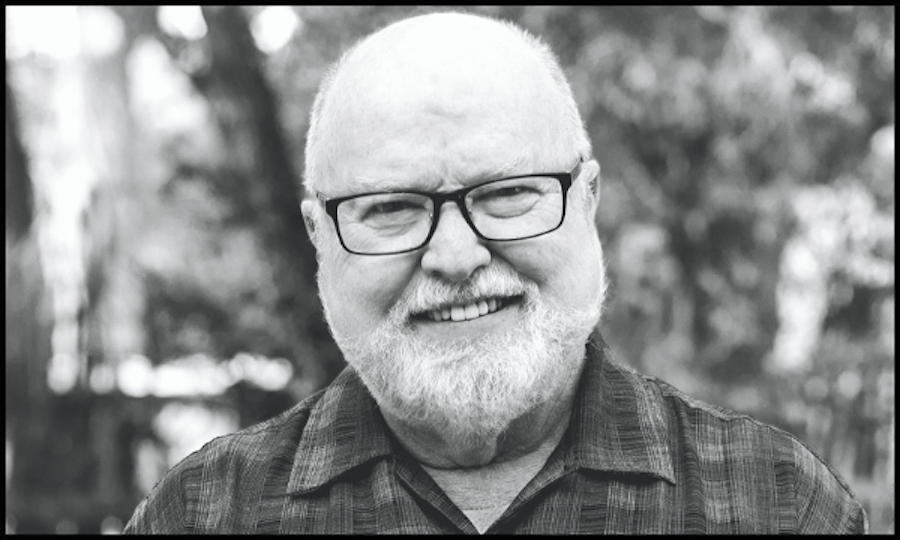Excerpt: The Universal Christ: How a Forgotten Reality Can Change Everything We See, Hope For, and Believe

In the beginning God created the heavens and the earth. Now the earth was formless and empty, darkness was over the surface of the deep, and the Spirit of God was hovering over the waters. And God said, “Let there be light,” and there was light.
—Genesis 1:1–3
Across the thirty thousand or so varieties of Christianity, believers love Jesus and (at least in theory) seem to have no trouble accepting his full humanity and his full divinity. Many express a personal relationship with Jesus—perhaps a flash of inspiration of his intimate presence in their lives, perhaps a fear of his judgment or wrath. Others trust in his compassion, and often see him as a justification for their worldviews and politics. But how might the notion of Christ change the whole equation? Is Christ simply Jesus’s last name? Or is it a revealing title that deserves our full attention? How is Christ’s function or role different from Jesus’s? What does Scripture mean when Peter says in his very first address to the crowds after Pentecost that “God has made this Jesus . . . both Lord and Christ” (Acts 2:36)? Weren’t they always one and the same, starting at Jesus’s birth?
To answer these questions, we must go back and ask, What was God up to in those first moments of creation? Was God totally invisible before the universe began? Or is there even such a thing as “before”? Why did God create at all? What was God’s purpose in creating? Is the universe itself eternal? Or is the universe a creation in time as we know it—like Jesus himself?
Let’s admit that we will probably never know the “how” or even the “when” of creation. But the question that religion tries to answer is mostly the “why.” Is there any evidence for why God created the heavens and the earth? What was God up to? Was there any divine intention or goal? Or do we even need a creator “God” to explain the universe?
Most of the perennial traditions have offered explanations, and they usually go something like this:Everything that exists in material form is the offspring of some Primal Source, which originally existed only as Spirit. This Infinite Primal Source somehow poured itself into finite, visible forms, creating everything from rocks to water, plants, organisms, animals, and human beings—everything that we see with our eyes. This self-disclosure of whomever you call God into physical creation was the first Incarnation (the general term for any enfleshment of spirit), long before the personal, second Incarnation that Christians believe happened with Jesus. To put this idea in Franciscan language, creation is the First Bible, and it existed for 13.7 billion years before the second Bible was written.*
When Christians hear the word “incarnation,” most of us think about the birth of Jesus, who personally demonstrated God’s radical unity with humanity. But in this book, I want to suggest that the first incarnation was the moment described in Genesis 1, when God joined in unity with the physical universe and became the light inside of everything. (This, I believe, is why light is the subject of the first day of creation, and its speed is now recognized as the one universal constant.) The incarnation, then, is not only “God becoming Jesus.” It is a much broader event, which is why John first describes God’s presence in the general word “flesh” (John 1:14). John is speaking of the ubiquitous Christ that Caryll Houselander so vividly encountered, the Christ that the rest of us continue to encounter in other human beings, a mountain, a blade of grass, or a starling.
Everything visible, without exception, is the outpouring of God. What else could it really be? “Christ” is a word for the Primordial Template (“Logos”) through whom “all things came into being, and not one thinghad its being except through him” (John 1:3). Seeing in this way has reframed, reenergized, and broadened my own religious belief, and I believe it could be Christianity’s unique contribution among the world religions.*
If you can overlook how John uses a masculine pronoun to describe something that is clearly beyond gender, you can see that he is giving us a sacred cosmology in his Prologue (1:1–18), and not just a theology. Long before Jesus’s personal incarnation, Christ was deeply embedded in all things—as all things! The first lines of the Bible say that “the Spirit of God was hovering over the waters,” or the “formless void,” and immediately the material universe became fully visible in its depths and meaning (Genesis 1:1ff.). Time, of course, has no meaning at this point. The Christ Mystery is the New Testament’s attempt to name this visibility or see-ability that occurred on the first day.
Remember, light is not so much what you directly see as that by which you see everything else. This is why in John’s Gospel, Jesus Christ makes the almost boastful statement “I am the Light of the world” (John 8:12). Jesus Christ is the amalgam of matter and spirit put together in one place, so we ourselves can put it together in all places, and enjoy things in their fullness. It can even enable us to see as God sees, if that is not expecting too much.
Scientists have discovered that what looks like darkness to the human eye is actually filled with tiny particles called “neutrinos,” slivers of light that pass through the entire universe. Apparently there is no such thing as total darkness anywhere, even though the human eye thinks there is. John’s Gospel was more accurate than we realized when it described Christ as “a light that darkness cannot overcome” (1:5). Knowing that the inner light of things cannot be eliminated or destroyed is deeply hopeful. And as if that is not enough, John’s choice of an active verb (“The true light . . . was coming into the world,” 1:9) shows us that the Christ Mystery is not a one-time event, but an ongoing process throughout time—as constant as the light that fills the universe. And “God saw that light was good” (Genesis 1:3). Hold on to that!
But the symbolism deepens and tightens. Christians believe that this universal presence was later “born of a woman under the law” (Galatians 4:4) in a moment of chronological time. This is the great Christian leap of faith, which not everyone is willing to make.
We daringly believe that God’s presence was poured into a single human being, so that humanity and divinity can be seen to be operating as one in him—and therefore in us! But instead of saying that God cameinto the world through Jesus, maybe it would be better to say that Jesus came out of an already Christ-soaked world. The second incarnation flowed out of the first, out of God’s loving union with physical creation. If that still sounds strange to you, just trust me for a bit. I promise you it will only deepen and broaden your faith in both Jesus and the Christ. This is an important reframing of who God might be and what such a God is doing, and a God we might need if we want to find a better response to the questions that opened this chapter.
My point is this: When I know that the world around me is both the hiding place and the revelation of God, I can no longer make a significant distinction between the natural and the supernatural, between the holy and the profane. (A divine “voice” makes this exactly clear to a very resistant Peter in Acts 10.) Everything I see and know is indeed one “uni-verse,” revolving around one coherent center. This Divine Presence seeks connection and communion, not separation or division—except for the sake of an even deeper future union.
What a difference this makes in the way I walk through the world, in how I encounter every person I see in the course of my day! It is as though everything that seemed disappointing and “fallen,” all the major pushbacks against the flow of history, can now be seen as one whole movement, still enchanted and made use of by God’s love. All of it must somehow be usable and filled with potency, even the things that appear as betrayals or crucifixions. Why else and how else could we love this world? Nothing, and no one, needs to be excluded.
Adapted from THE UNIVERSAL CHRIST: How a Forgotten Reality Can Change Everything We See, Hope For, and Believe © 2019 by Center for Action and Contemplation, Inc. Published by Convergent, an imprint of Penguin Random House LLC, on March 5. No part of this excerpt may be reproduced or reprinted without permission in writing from the publisher.
This excerpt was featured in the March 17th edition of The Sunday Paper, Maria Shriver’s free weekly newsletter for people with passion and purpose. To get inspiring and informative content like this piece delivered straight to your inbox each Sunday morning, click here to subscribe.
READ MORE STORIES THAT MOVE HUMANITY FORWARD
READ MORE STORIES THAT MOVE HUMANITY FORWARD
SIGN UP FOR MARIA’S SUNDAY PAPER


